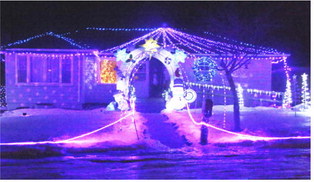NWS To Use New Cold Weather Alerts
As winter weather conditions approach, alerts used to express the danger of seasonal cold air will change, according to National Weather Service staff.
Terms like “Wind Chill Warning” and “Wind Chill Watch” will no longer be used moving forward, according to NWS press materials released earlier this fall. Beginning this winter, above terms will be replaced with different ways to describe dangerously cold conditions.
Looming cold weather posing serious risks will now fall into three possible advisories: “Cold Weather Advisory,” “Extreme Cold Watch” and “Extreme Cold Warning.” The new language will allow the NWS staff to communicate wind levels during extreme cold.
An Extreme Cold Watch will be issued when temps feel like -35 degrees Fahrenheit or colder. An Extreme Cold Watch Warning will be issued if the threat is imminent, with conditions expected to arrive within the next 12 to 36 hours. A Cold Weather Advisory will be issued when it feels like -25 degrees or colder.
Extreme cold is dangerous because it can quickly cause frostbite and hypothermia.
Extreme Cold Warning:
Formerly known as the Wind Chill Warning, this new alert term is used when temperatures or wind chills are expected to drop below 15 degrees or colder.
Cold Weather Advisory:
Formerly known as a Wind Chill Advisory, this alert is issued when temperatures or wind chills are expected to drop below 25 degrees.
Freeze Watch: Formerly known as the Hard Freeze Watch, this alert is issued when the temperature is expected to be 32 degrees.
Freeze Warning: Formerly known as the Hard Freeze Warning, this alert is issued when the temperature is 32 degrees or below.
For more information about current or pending weather conditions in northeast Montana, visit weather. gov/ggw.
